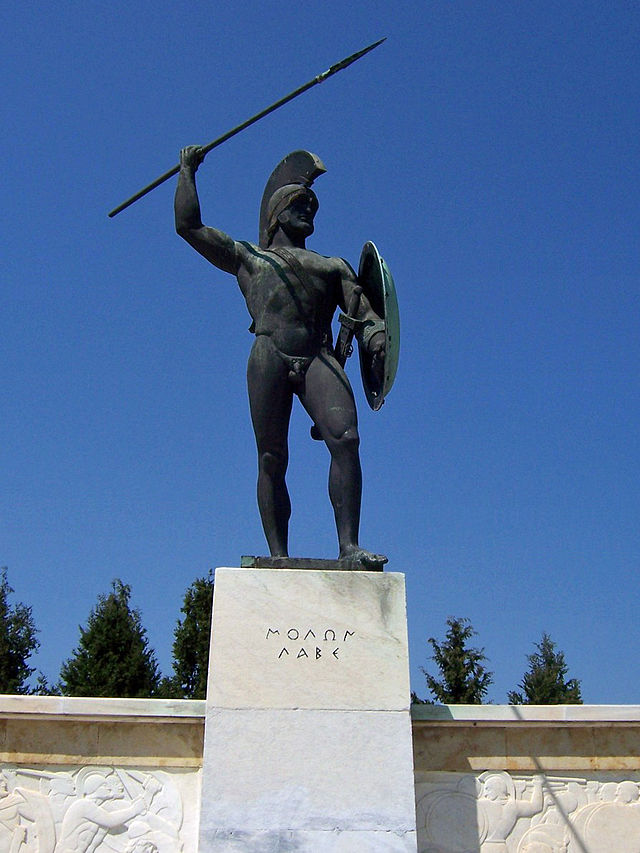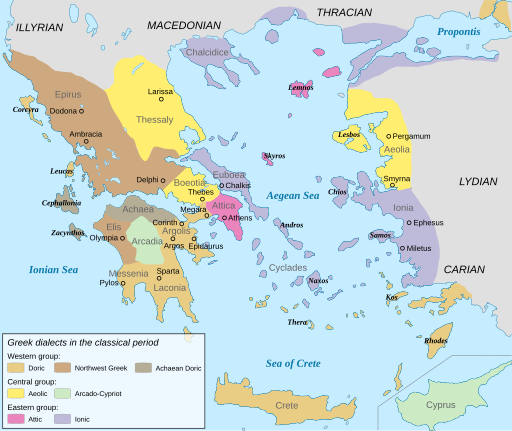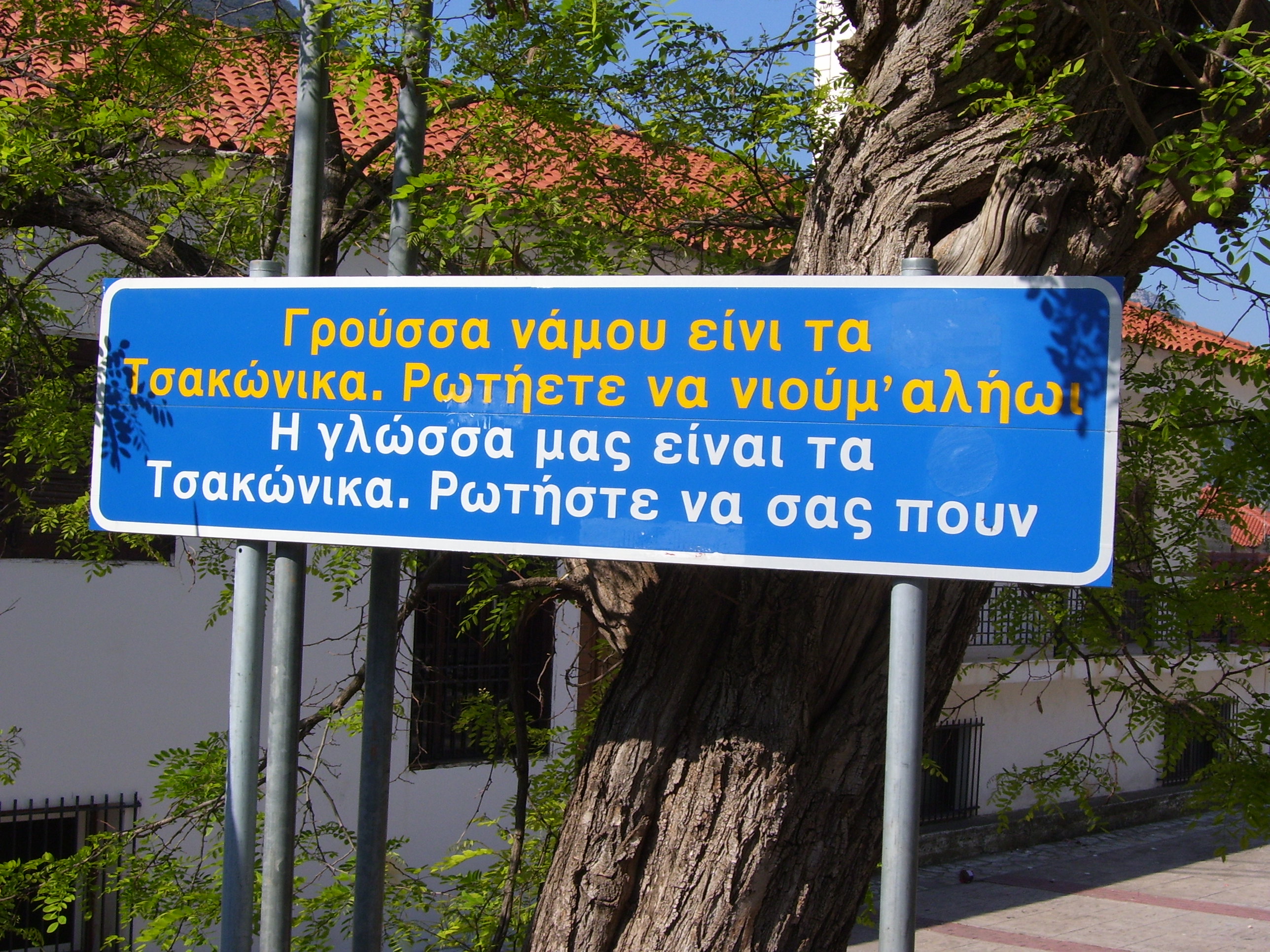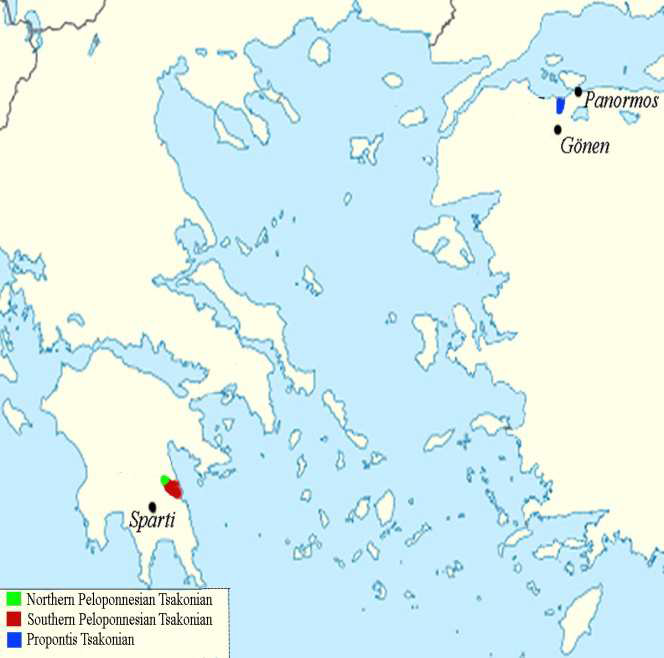What is the Tsakonian language?
Tsakonian Greek is a critically endangered variety of Greek spoken in the Southeastern coast of the Peloponnese, Greece. Unlike most other Greek varieties, which evolved from Attic or Ionic Greek, Tsakonian is considered to be the only variety living descendant of the Doric Greek dialect spoken in ancient Sparta (Liosis, 2016) and used by King Leonidas on his well-known saying Μολών λαβέ (Molón lavé, Come and take them) during the Battle of Thermopylae in 480 BC.

Statue of King Leonidas in Thermopylae with the inscription Μολών λαβέ.
The Ancient Greek language was divided into several dialects, with Doric being one of the most prominent ones, spoken in the Peloponnese and the islands of the Southern Aegean.

Map of Ancient Greek Dialects. Source: Woodard (2008).
The language isolation shifted in the 20th century when exposure to radio systems and the improvement of road connections led to a sharp decline in Tsakonian usage from the 70’s onwards. Restrictions to the usage of the language at schools and the lack of written materials have also contributed to the language’s decline. Currently, it is estimated that it is used by around 2000 speakers, mostly aged 50 or more and with reduced exposure to younger generations (Endangered Languages Project, 2024). Other reports (Nicholas, 2019) indicate even lower estimates of around 1000 speakers.
However, revitalization efforts have been undertaken, driven mainly by the Tsakonian Archives. Founded in 1954, it has gathered and published a significant amount of material on Tsakonian language and culture. The book Για να κ̇οντούμε τα γρούσσα νάμου (To preserve our language) by Ioannis Kamvysis (2020) is a recent example of this effort and can be found on the Archive's webpage. Designed as an introductory book for Tsakonian learners, it includes valuable materials for learning the language, such as grammar explanations, vocabulary and texts.
Besides, despite limited daily usage, local communities acknowledge the language’s value as a cultural heritage by their eagerness to share information about the language and the presence of signs in Tsakonian. Current academics such as Maxim Kisilier have also contributed to the endeavors and study of the language by imparting Tsakonian lessons and producing scientific publications. Other local figures include Panos Marneris, author of the book Το βιβλίε νάμου (Our book, 2024), aimed at promoting the language among the younger generations. More informal Tsakonian sources can be found in certain Facebook groups, such as Vaskina's friends.

Tsakonian Sign in Leonidio: Our language is Tsakonian. Ask so they tell you [about it]. Source: Wikipedia.
Despite the efforts, written material is extremely scarce and requires Modern Greek knowledge to be understood. Hoping to collaborate to the endeavors, the Tsakonian Digital group is currently working on the digitalization and preservation of Tsakonian using electronical means: a digital open dictionary based on existing sources has been put forward while aiming at developing an artificial intelligence capable of speaking Tsakonian for a richer and innovative preservation approach.
